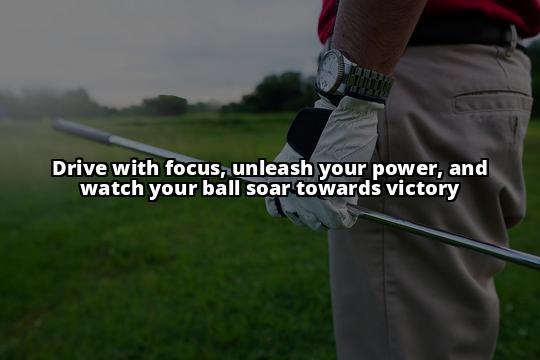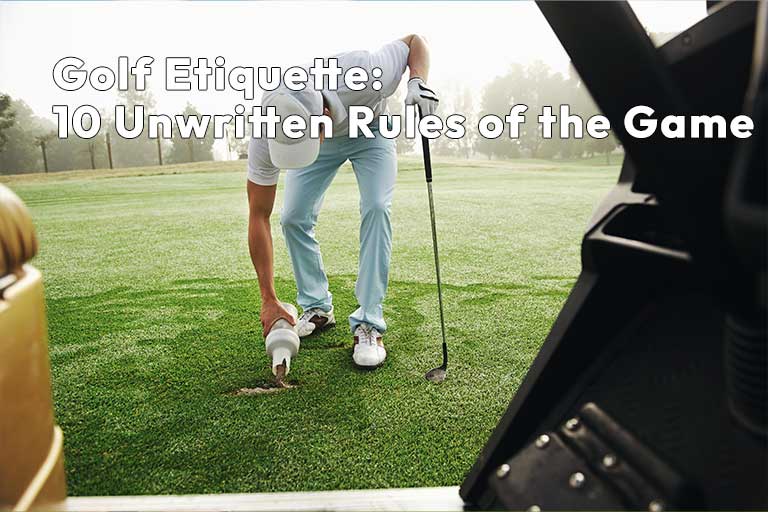Table of Contents
These 7 helpful hints to drive your golf ball far as distance does matter. Yes, accuracy is imperative, but let’s not kid ourselves: smashing a long drive down the fairway is one of the most exhilarating feelings in golf. It’s not just about the bragging rights; it’s about setting yourself up for success on your next shot, reducing the course to a more manageable challenge. With that in mind, let’s dive into seven actionable tips designed to help you unlock that extra yardage off the tee. This isn’t about reinventing the wheel; it’s about refining your approach with practical, implementable advice. So, if you’re ready to leave your buddies in awe the next time you tee off, keep reading.
Learn to Drive Your Golf Ball Far and Accurately
- Get the right equipment for golfing.
- Set up correctly for driving success.
- Utilize tips for maximizing distance and accuracy.
1. Get the Right Equipment
It’s no secret that the right equipment can significantly impact your game. When it comes to driving for distance and accuracy, having a driver that complements your swing speed and style is non-negotiable. The advent of custom-fitted clubs has been a game-changer, allowing players to match their equipment to their physical characteristics and swing tendencies precisely.
Insider Tip: “Don’t underestimate the power of a well-fitted driver. It’s like finding the right partner; when it fits, everything just works better,” says a renowned golf equipment specialist.
The quest for the perfect driver should consider factors like shaft flex, loft, and clubhead size. Remember, a driver that suits your golf buddy may not be the right one for you. It’s worth investing time in getting fitted by a professional who can analyze your swing and recommend the ideal specifications for your driver.
For those looking to upgrade their gear, consider reading our article on how new grips provide both confidence and performance.
2. Set Up for Success

Your setup is foundational to achieving both distance and accuracy in your drives. It’s about more than just standing over the ball; it’s about positioning your body to maximize power and control. The stance should be wide, stable, and balanced, with a slight tilt of the spine away from the target to promote an upward strike on the ball.
The grip, often overlooked, plays a crucial role in controlling the clubhead. It should be firm yet relaxed, allowing for a fluid swing. Aligning your body correctly, with your feet, hips, and shoulders square to the target line, sets the stage for a powerful and accurate drive.
3. Make a Good Backswing
A good backswing sets the tone for the entire shot. It’s not about how far back you can go; it’s about loading up power while maintaining control. The key is to rotate your shoulders fully while keeping your lower body relatively stable, creating a coiled spring effect.
This winding up should be smooth and controlled, with a focus on maintaining a consistent tempo. Rushing the backswing can lead to timing issues and a loss of power. Remember, a well-executed backswing is the launchpad for a powerful drive.
4. Start the Downswing With Your Lower Body
Initiating the downswing with your lower body is crucial for generating maximum power. Think of it as a chain reaction: the hips start, followed by the torso, arms, and finally the clubhead. This sequence ensures that the clubhead reaches its highest speed at the moment of impact.
Insider Tip: “Imagine squashing a bug with your lead foot to start the downswing. This mental image can help trigger that all-important hip rotation,” shares a PGA Tour coach.
The transition from backswing to downswing should feel natural and fluid. Any abrupt movements can disrupt the swing’s rhythm, leading to a loss of power and accuracy.
5. Release the Clubhead
The moment of truth in any golf swing is the release of the clubhead. This is where all the stored energy from your backswing and downswing is transferred to the ball. The release should be a natural outcome of the swing’s momentum, with the wrists unhinging and the clubhead accelerating through the impact zone.
A timely and powerful release will send the ball soaring. Conversely, releasing too early or too late can lead to slices, hooks, and a significant loss of distance. Practice drills that focus on this aspect of the swing can lead to breakthroughs in both distance and accuracy.
6. Finish With Your Belt Buckle Facing the Target

The follow-through is as important as any other part of the swing. A complete follow-through, with your belt buckle facing the target and your weight fully shifted onto the front foot, signifies a swing that has maintained its momentum and power from start to finish.
This position also indicates a proper balance and control throughout the swing, essential ingredients for driving for distance and accuracy. A well-executed follow-through can be the difference between a drive that finds the fairway and one that ends up in the rough.
Real-Life Example: Overcoming Distance Struggles
Mark’s Struggle
As a regular golfer, Mark always felt frustrated with his lack of distance off the tee. Despite practicing diligently, he couldn’t seem to hit the ball as far as his friends. Determined to improve his game, Mark decided to focus on his technique and physical fitness.
Mark’s Journey to Improvement
Mark consulted with a golf pro who analyzed his swing and recommended a few equipment adjustments to better suit his swing speed. With a new driver in hand, Mark noticed an immediate improvement in his distance.
Additionally, Mark worked on setting up correctly before each shot, ensuring his stance and alignment were spot on. By making a conscious effort to engage his lower body in the downswing, he generated more power and speed through impact.
Through dedicated practice and some targeted exercises at the gym, Mark strengthened his core and lower body, allowing him to maintain his balance and generate more clubhead speed. As a result, Mark’s drives started consistently reaching impressive distances, and his overall game saw a significant improvement.
7. Hit the Gym
While technique is paramount, physical fitness cannot be overlooked when striving for longer drives. Strength, flexibility, and stability are all critical for a powerful golf swing. Incorporating golf-specific workouts into your routine can lead to significant gains on the course.
Focusing on core strength, leg power, and flexibility can improve your swing speed and control, translating to more distance off the tee. Remember, a stronger body supports a more efficient and powerful swing.
For those interested in a deeper dive into conditioning, explore our article on how to have a range routine that includes fitness elements.
Driving a golf ball far and accurately is a skill that combines the right equipment, technique, and physical conditioning. Each of these seven tips offers a piece of the puzzle. By focusing on these areas, golfers can see significant improvements in their driving distance, setting the stage for lower scores and more enjoyable rounds. Remember, progress in golf is often incremental, and patience, along with consistent practice, is key. Whether it’s refining your setup or hitting the gym, every step you take can lead to that awe-inspiring drive down the fairway.
FAQ
Q. Who benefits from improving their driving for distance and accuracy in sports?
A. Athletes in golf, disc golf, baseball, and tennis can benefit greatly.
Q. What are some techniques to improve driving for distance and accuracy in sports?
A. Practicing proper form, strength training, and focusing on consistency.
Q. How can strength training help improve driving for distance and accuracy in sports?
A. Strength training helps generate more power and stability for better performance.
Q. What if I struggle to see improvements in my driving distance and accuracy?
A. Consistent practice, feedback from a coach, and video analysis can help.
Q. How important is form in driving for distance and accuracy in sports?
A. Proper form is crucial for maximizing power and achieving accuracy.
Q. What if I don’t have access to a coach for driving improvement?
A. Utilize online resources, instructional videos, and practice with feedback.





